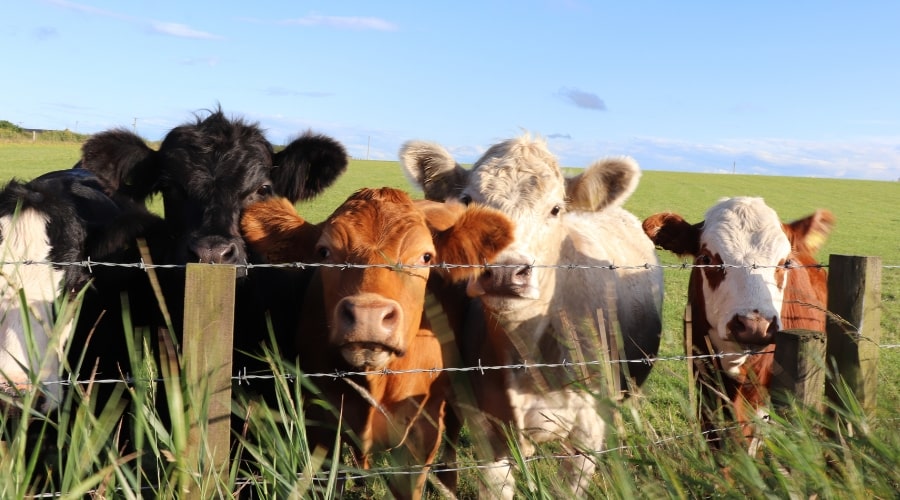Setting up proper fencing is crucial for raising beef cows on a hobby farm. Secure fencing protects your cows and prevents escapes, ensuring their safety and your peace of mind. Here are the key steps to prepare fencing before your cows arrive.
Choosing the Right Fencing Type
The type of fencing you choose depends on your budget, the number of cows, and the layout of your farm. High-tensile electric fencing is a popular choice because it is durable, cost-effective, and easy to install. Woven wire fencing is another reliable option, especially for smaller farms, as it provides a physical barrier to contain your cows.
Barbed wire is commonly used for beef cattle but requires proper installation to prevent injuries. Avoid using barbed wire for calves or small enclosures where the risk of entanglement is higher. If you’re starting small, consider portable electric fencing for rotational grazing and flexibility.
Planning the Fencing Layout
Start by mapping out your farm to determine the areas where fencing is needed. Prioritize boundary fences to define the perimeter and protect your cows from predators or neighboring livestock. Plan for interior fences to divide grazing areas, allowing for rotational grazing to improve pasture health.
Include gates in strategic locations for easy access to pastures, feed areas, and shelters. Choose gates that are wide enough to accommodate equipment like tractors or feed wagons. Ensure the layout promotes efficient movement of cattle between pastures.
Installing the Fence
Prepare the ground by clearing brush, debris, and obstacles along the fence line. This step ensures proper installation and prevents future maintenance issues. Use durable materials for fence posts, such as treated wood or metal, to extend the lifespan of your fencing.
Set the corner posts firmly in the ground, as they bear the most tension. Space line posts 8 to 12 feet apart for electric fencing and 10 to 20 feet apart for woven wire fencing. Install electric wires or woven wire at heights suitable for cattle, typically 36 to 48 inches from the ground.
Testing and Maintenance
Once installed, test electric fences to ensure they deliver adequate voltage to deter cattle. Use a fence tester to check for any breaks or weak spots. Inspect the fencing regularly for signs of wear, such as sagging wires or damaged posts.
Keep vegetation trimmed along the fence line to prevent short circuits in electric fencing. Replace broken components promptly to maintain the integrity of your fencing system. Regular maintenance reduces the risk of escapes and ensures your cows remain safe.
Checklist for Preparing Fencing
- Choose a durable fencing type suitable for beef cows.
- Map out the farm and plan the fencing layout.
- Clear the fence line of brush and debris.
- Install sturdy corner and line posts.
- Test electric fencing for proper voltage.
- Inspect and maintain the fencing regularly.
By preparing secure and functional fencing before your cows arrive, you set the foundation for a successful beef cattle operation. A well-designed fencing system ensures the safety of your animals and simplifies farm management.


